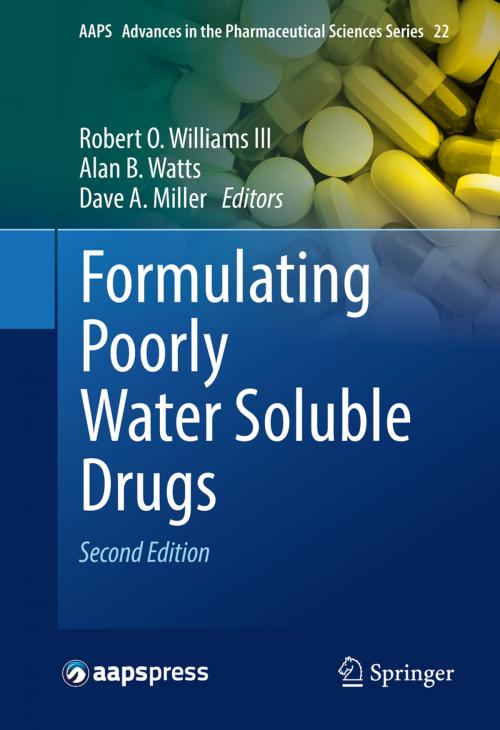Formulating Poorly Water Soluble Drugs
Nonfiction, Health & Well Being, Medical, Specialties, Pharmacy, Science & Nature, Technology, Engineering, Chemical & Biochemical| Author: | ISBN: | 9783319426099 | |
| Publisher: | Springer International Publishing | Publication: | December 16, 2016 |
| Imprint: | Springer | Language: | English |
| Author: | |
| ISBN: | 9783319426099 |
| Publisher: | Springer International Publishing |
| Publication: | December 16, 2016 |
| Imprint: | Springer |
| Language: | English |
The objective of this volume is to consolidate within a single text the most current knowledge, practical methods, and regulatory considerations pertaining to formulations development with poorly water-soluble molecules. A pharmaceutical scientist’s approach toward solubility enhancement of a poorly water-soluble molecule typically includes detailed characterization of the compound’s physiochemical properties, solid-state modifications, advanced formulation design, non-conventional process technologies, advanced analytical characterization, and specialized product performance analysis techniques. The scientist must also be aware of the unique regulatory considerations pertaining to the non-conventional approaches often utilized for poorly water-soluble drugs. One faced with the challenge of developing a drug product from a poorly soluble compound must possess at minimum a working knowledge of each of the abovementioned facets and detailed knowledge of most. In light of the magnitude of the growing solubility problem to drug development, this is a significant burden especially when considering that knowledge in most of these areas is relatively new and continues to develop
The objective of this volume is to consolidate within a single text the most current knowledge, practical methods, and regulatory considerations pertaining to formulations development with poorly water-soluble molecules. A pharmaceutical scientist’s approach toward solubility enhancement of a poorly water-soluble molecule typically includes detailed characterization of the compound’s physiochemical properties, solid-state modifications, advanced formulation design, non-conventional process technologies, advanced analytical characterization, and specialized product performance analysis techniques. The scientist must also be aware of the unique regulatory considerations pertaining to the non-conventional approaches often utilized for poorly water-soluble drugs. One faced with the challenge of developing a drug product from a poorly soluble compound must possess at minimum a working knowledge of each of the abovementioned facets and detailed knowledge of most. In light of the magnitude of the growing solubility problem to drug development, this is a significant burden especially when considering that knowledge in most of these areas is relatively new and continues to develop















